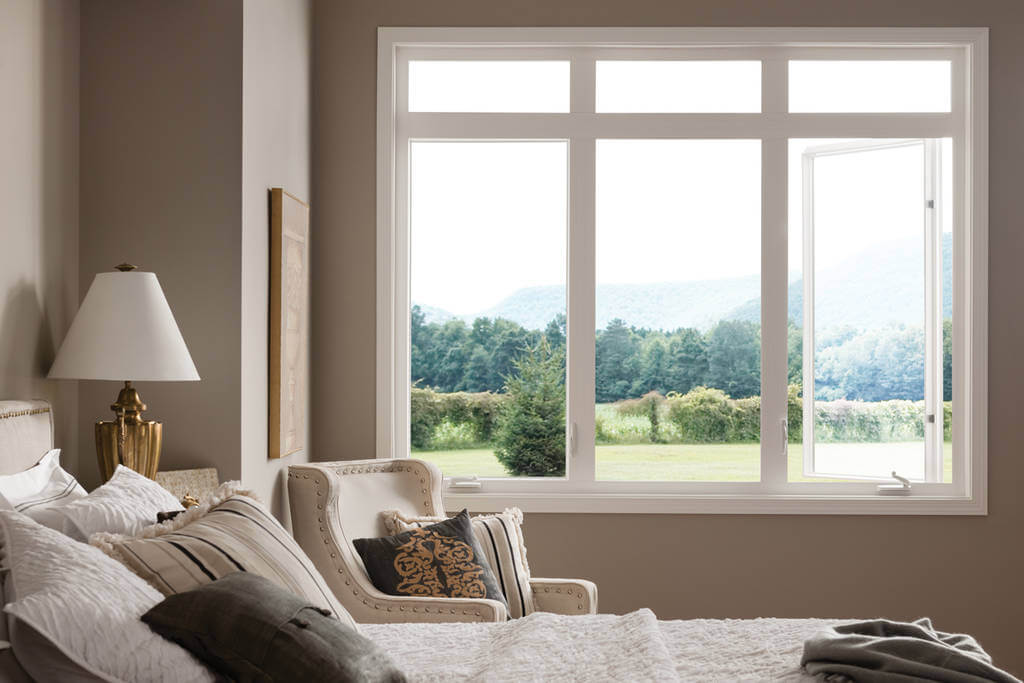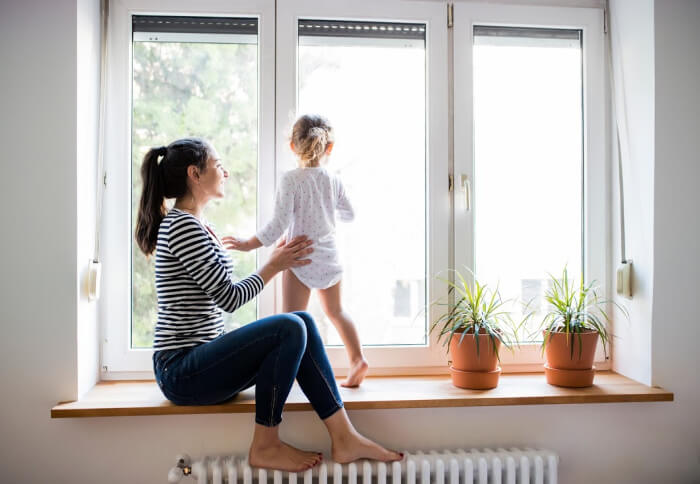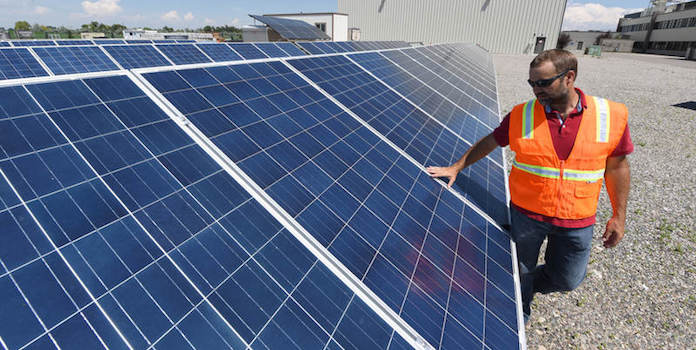When it comes to home improvement, one of the most impactful upgrades homeowners can make is installing new windows. Whether your goals are to improve energy efficiency, boost home security, or simply enhance the aesthetics of your home, new windows can provide a multitude of benefits. Let’s explore why investing in energy-efficient windows is a wise decision for any homeowner.
Toc
Introduction to New Windows for Home Improvement

New windows are an important aspect of home improvement that can greatly enhance the overall look and feel of your home. They not only improve the aesthetics but also offer a range of benefits that make them a wise investment for any homeowner.
The Importance of Energy-Efficient Windows
Energy efficiency is a top concern for both homeowners and the environment. With rising energy costs, it’s crucial to invest in measures that can help reduce energy consumption and save on utility bills. This is where energy-efficient windows come into play.
These windows are specifically designed to minimize heat transfer, keeping your home cooler in summer and warmer in winter. This reduces the need for excessive heating or cooling, leading to lower energy bills and a smaller carbon footprint.
Moreover, energy-efficient windows can also help reduce noise pollution, making your home more peaceful and comfortable. They are typically made with multi-pane glass and advanced framing materials that provide better insulation, trapping sound waves before they enter your home. This can be especially beneficial for those living in noisy areas or near busy roads.
The Impact on Home Security
When it comes to keeping your home safe and secure, windows play a critical role. Old or poorly functioning windows can make your home an easy target for burglars, compromising the safety of your family and belongings.
New energy-efficient windows often come with advanced security features such as laminated glass, multi-point locking systems, and reinforced frames that make them more difficult to break into. This added level of protection can give homeowners peace of mind and improve the overall security of their homes.
The Installation Process

The installation process of new windows is a crucial step that ensures you reap all the benefits they offer. It involves several stages, from selecting the right window type and materials to the actual fitting and finishing touches.
Step 1: Choosing the Right Windows
Before installation, homeowners need to choose the type of windows that best suit their requirements. Options range from double-hung and casement to picture and bay windows. The choice depends on factors like the desired level of ventilation, ease of cleaning, and architectural style of the home.
Step 2: Preparing for Installation
Preparation involves measuring the existing window openings accurately to ensure the new windows fit perfectly. This step is vital for preventing drafts, leaks, and inefficiencies. Prepping the area might also include removing any furniture or coverings near the windows to provide easy access for the installers.
Step 3: Removing Old Windows
Professional installers will carefully remove the old windows to avoid damage to the surrounding walls and interior finishings. This stage requires precision to ensure that the opening is ready for the new window.
Step 4: Installing the New Windows
The new windows are then fitted into the openings. Installers will ensure the windows are level, plumb, and properly secured. The use of high-quality caulking and insulation materials around the edges is crucial to achieving an airtight seal, which enhances the energy efficiency and security of the windows.
Step 5: Finishing Touches
Once the windows are in place, the final step is to add any trim or moulding to give a polished look to the installation. Installers will also check for any gaps or uneven spots and make the necessary adjustments to ensure a perfect fit.
Post-Installation Inspection and Maintenance
A thorough inspection follows the installation process to ensure everything is functioning correctly, with no leaks or operational issues. Homeowners are advised on how to maintain their new windows to keep them in optimal condition for years to come, which typically includes regular cleaning and periodic inspections for wear and tear.
By following these steps, homeowners can be confident that their new windows will not only improve their home’s aesthetics and security but also deliver significant energy savings.
Professional vs. DIY Installation

When deciding to install new windows, homeowners must choose between professional installation and a do-it-yourself (DIY) approach. Each option has its pros and cons.
Professional Installation
Opting for professional installation ensures that the job is done correctly and efficiently. Certified installers have the expertise and tools necessary to handle various types of windows and installation scenarios. They are knowledgeable about building codes and best practices, which helps to avoid potential issues like air leaks or water damage. Additionally, many window manufacturers offer warranties that require professional installation to remain valid. This adds an extra layer of protection for your investment.
DIY Installation
Choosing to install windows yourself can be a cost-effective option, especially for those who are handy and have experience with home improvement projects. DIY installation allows for greater control over the process and can be tailored to fit your schedule. However, it requires a significant time investment and the acquisition of proper tools and materials. It’s important to consider that improper installation can lead to long-term problems, such as drafts, moisture intrusion, and decreased energy efficiency. Therefore, it’s crucial to carefully research and educate yourself before attempting a DIY window installation. In some cases, hiring a professional might ultimately save time, money, and headaches in the long run.
Maintenance and Care of New Windows
Once your new windows are installed, proper maintenance is essential to ensure their longevity and performance. Regular cleaning with appropriate products will keep the glass clear and the frames in good condition. It is also important to inspect the seals and caulking periodically to address any wear or damage promptly. Lubricating the moving parts, such as hinges and locks, can maintain smooth operation and extend the life of your windows. By investing time in maintenance, you can preserve the appearance and functionality of your windows for years to come.
Cost of Window Installation

The cost of window installation can vary significantly based on several factors, including the type of windows, the materials used, the size of the project, and whether you opt for professional installation or a DIY approach.
Factors Influencing the Cost
- Type of Windows: Different window styles have varying price points. For instance, custom or specialty windows like bay or bow windows typically cost more than standard double-hung or casement windows.
- Materials: The material of the window frames plays a significant role in the overall cost. Vinyl windows are generally more affordable, while wood or fiberglass options tend to be higher-end and more expensive.
- Labour Costs: Hiring professional installers will add to the total cost. This can vary based on the complexity of the installation, including any additional work needed to prepare the existing openings or repair surrounding areas.
- Energy Efficiency: Windows with advanced energy-efficient features, such as multi-pane glass, Low-E coatings, and gas fills, may have a higher upfront cost but can lead to substantial savings on energy bills over time.
- Location: The geographic location can also affect the cost due to differences in local labour rates and building codes.
Estimating Your Budget
To create a realistic budget for window installation, it’s essential to get multiple quotes from different suppliers and installers. This will give you a better understanding of the average cost in your area and help identify where you can economize without compromising on quality.
Financing and Incentives
Many homeowners may qualify for financing options or incentives that can help offset the cost of window installation. Government programs, rebates for energy-efficient upgrades, and manufacturer promotions are some avenues to explore. These financial aids can make it more feasible to invest in high-quality windows that provide long-term benefits.
Investing time in research and planning can ensure that you make an informed decision that balances cost with quality, thereby maximizing the return on investment for your new windows.
Common Window Types

Double-Hung Windows
Double-hung windows are among the most popular types of windows due to their versatility and ease of use. They feature two operable sashes that slide vertically, allowing for excellent ventilation and easy cleaning. The ability to open both the top and bottom sashes makes it possible to create a balanced airflow that can help regulate indoor temperatures. Double-hung windows are compatible with various architectural styles and are available in numerous materials, including wood, vinyl, and fiberglass.
Casement Windows
Casement windows are hinged on one side and open outward, typically operated by a crank mechanism. This design allows for unobstructed views and excellent ventilation, as the entire window can be opened. Casement windows seal tightly when closed, offering superior energy efficiency compared to some other window styles. They are ideal for hard-to-reach places, such as over sinks or countertops, and their contemporary look makes them a popular choice for modern homes.
Sliding Windows
Sliding windows operate by moving horizontally along a track. They are easy to use and provide a wide view of the outdoors. This type of window is particularly suitable for areas where vertical space is limited, such as in basements or smaller rooms. Sliding windows require minimal maintenance due to their simple design, and they are often more affordable than other window types.
Awning Windows
Awning windows are hinged at the top and open outward from the bottom, resembling an awning when open. This design provides excellent ventilation while protecting the interior from rain, making them ideal for wet climates. Awning windows are often placed higher on walls to allow for natural light and privacy. They can be used alone or in combination with other window styles.
Bay and Bow Windows
Bay and bow windows project outward from the home’s exterior, creating a nook or alcove inside. Bay windows typically consist of a central fixed window flanked by two operable windows at an angle, while bow windows are curved and made up of four or more operable windows. These windows add architectural interest and extra space to a room, often providing a cozy seating area with a panoramic view.
Picture Windows
Picture windows are large, fixed-pane windows that do not open. They are designed to frame an unobstructed view of the outdoors, bringing in plenty of natural light. Picture windows are often used in conjunction with operable windows to maintain ventilation without compromising the view. They are ideal for spaces where ventilation is not a primary concern but where a scenic view and abundant light are desired.
Garden Windows
Garden windows extend outward from the exterior wall, creating a small, shelf-like space ideal for growing plants indoors. They typically feature a sloped glass roof to allow maximum sunlight and operable side vents for ventilation. Garden windows are perfect for kitchen areas where homeowners can grow herbs or small plants, adding a touch of greenery and making the kitchen space more inviting. The added shelf space can also be used for displaying decorative items, bringing functionality and aesthetic appeal together.
Skylight Windows
Skylight windows are installed in the roof and provide natural light from above. These types of windows are particularly useful in rooms that do not have access to exterior walls for traditional windows, such as attics or certain bathrooms. Skylights can significantly brighten a room and even offer an element of architectural interest. Many skylights come with options for ventilation, and some can be opened electronically, allowing airflow in addition to light.
Arched Windows
Arched windows feature a rounded top and are often used to add a touch of elegance and classical architecture to a home. They can be either fixed or operable and are generally positioned above standard windows or doors. Arched windows are versatile and can be used in various interior design styles, from traditional to modern. They are frequently employed as decorative elements to enhance the visual appeal of a room or facade.
Egress Windows
Egress windows are specifically designed for safety, providing an emergency exit from a basement or lower-level living space. They must meet building code requirements for size and operability to ensure they can be easily opened from the inside. Egress windows are essential for any basement bedroom and contribute to the overall safety and livability of the home’s lower levels. They also bring natural light and ventilation to otherwise dim and enclosed spaces.
Conclusion
Investing in new windows is a smart move for any homeowner. From improved energy efficiency and enhanced safety to increased comfort and a boost in home value, the benefits are numerous. If you’re considering upgrading your windows, now is the perfect time to take the plunge.
Ready to experience these benefits for yourself? Learn more about our selection of energy-efficient windows and schedule a consultation with our experts. Transform your home today with new windows that blend style, security, and efficiency seamlessly.






